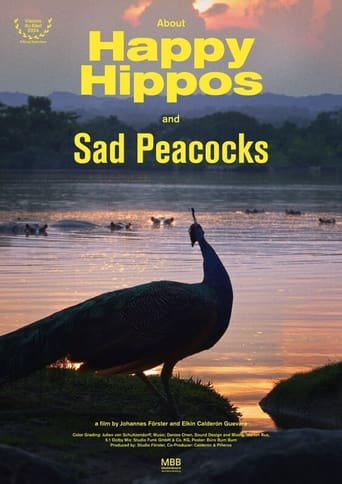About Happy Hippos and Sad Peacocks
How did peacocks, originally from India, end up on an island in Berlin in the 19th century, and hippopotamuses, a century later, on the banks of a river in Colombia? Their lives there appear to be “happy and free”. With rapturous imagery, Elkin Calderòn Guevara and Johannes Förster’s decolonial fable turns them into wild icons, bearing witness to the whims of the powerful. How did peacocks, originally from India, end up on an island in Berlin in the 19th century, and hippopotamuses, a century later, on the banks of a river in Colombia? Their lives there appear to be “happy and free”. With rapturous imagery, Elkin Calderòn Guevara and Johannes Förster’s decolonial fable turns them into wild icons, bearing witness to the whims of the powerful. How did peacocks, originally from India, end up on an island in Berlin in the 19th century, and hippopotamuses, a century later, on the banks of a river in Colombia? Their lives there appear to be “happy and free”. With rapturous imagery, Elkin Calderòn Guevara and Johannes Förster’s decolonial fable turns them into wild icons, bearing witness to the whims of the powerful. How did peacocks, originally from India, end up on an island in Berlin in the 19th century, and hippopotamuses, a century later, on the banks of a river in Colombia? Their lives there appear to be “happy and free”. With rapturous imagery, Elkin Calderòn Guevara and Johannes Förster’s decolonial fable turns them into wild icons, bearing witness to the whims of the powerful.



 AD
AD